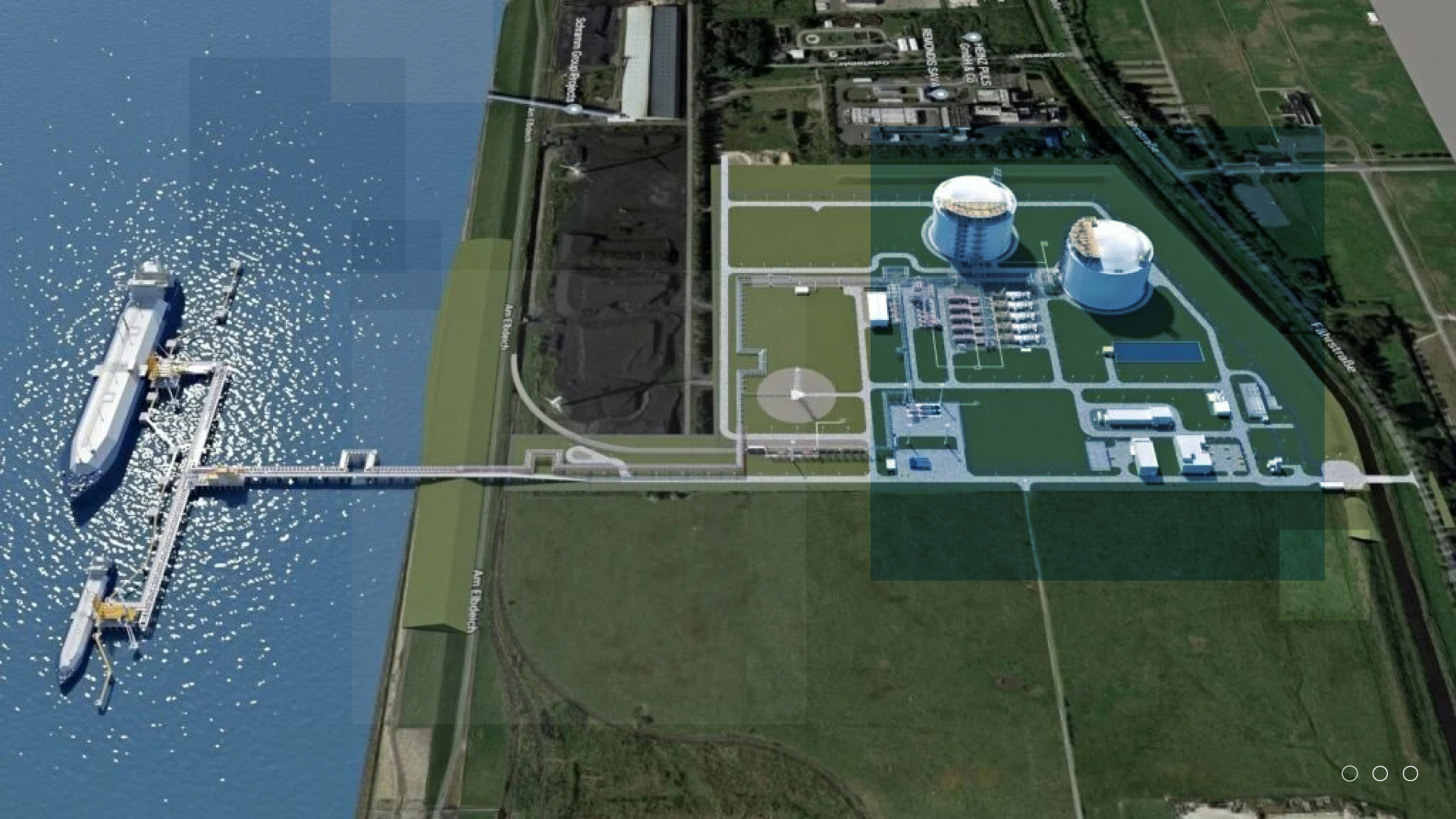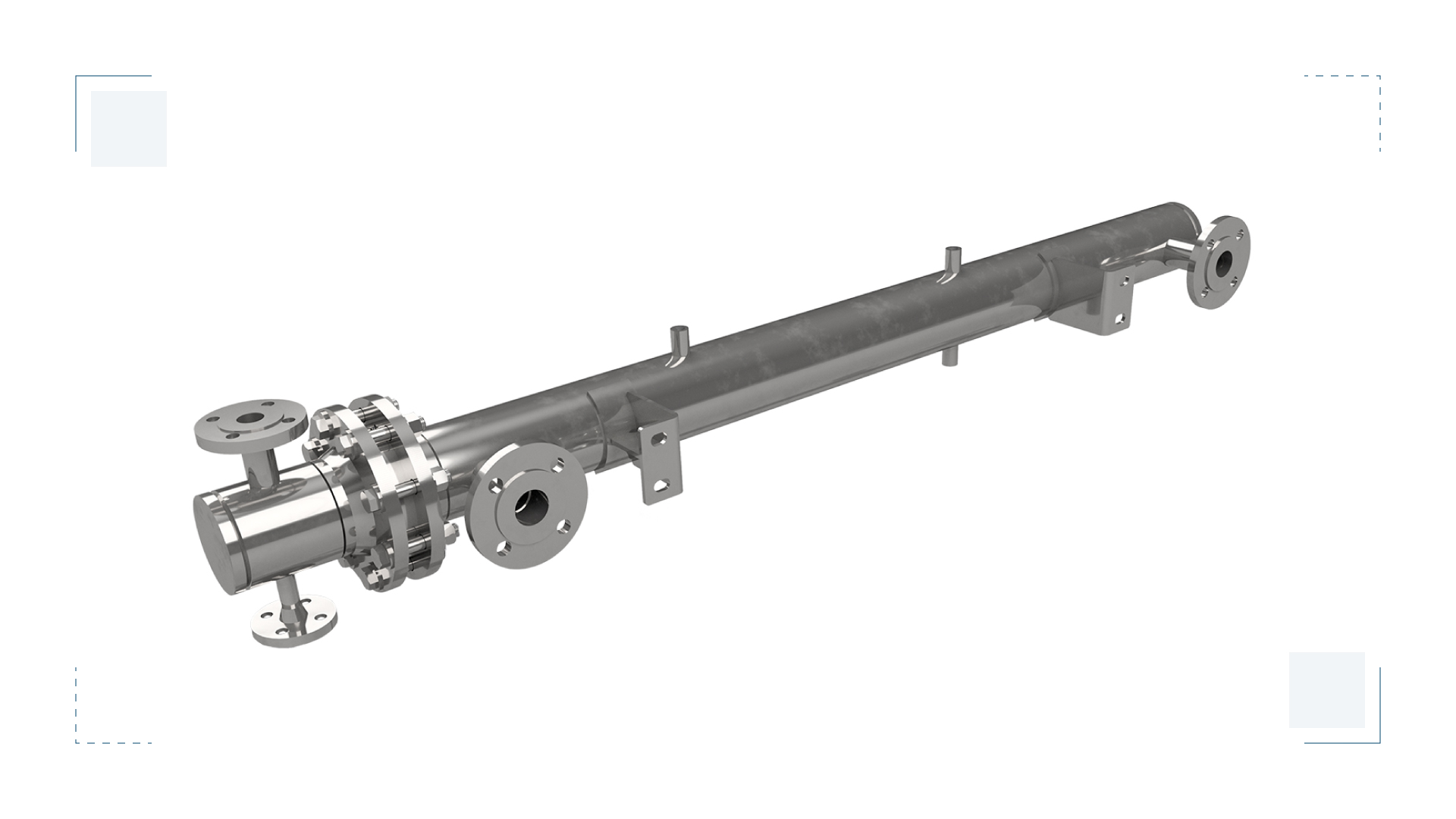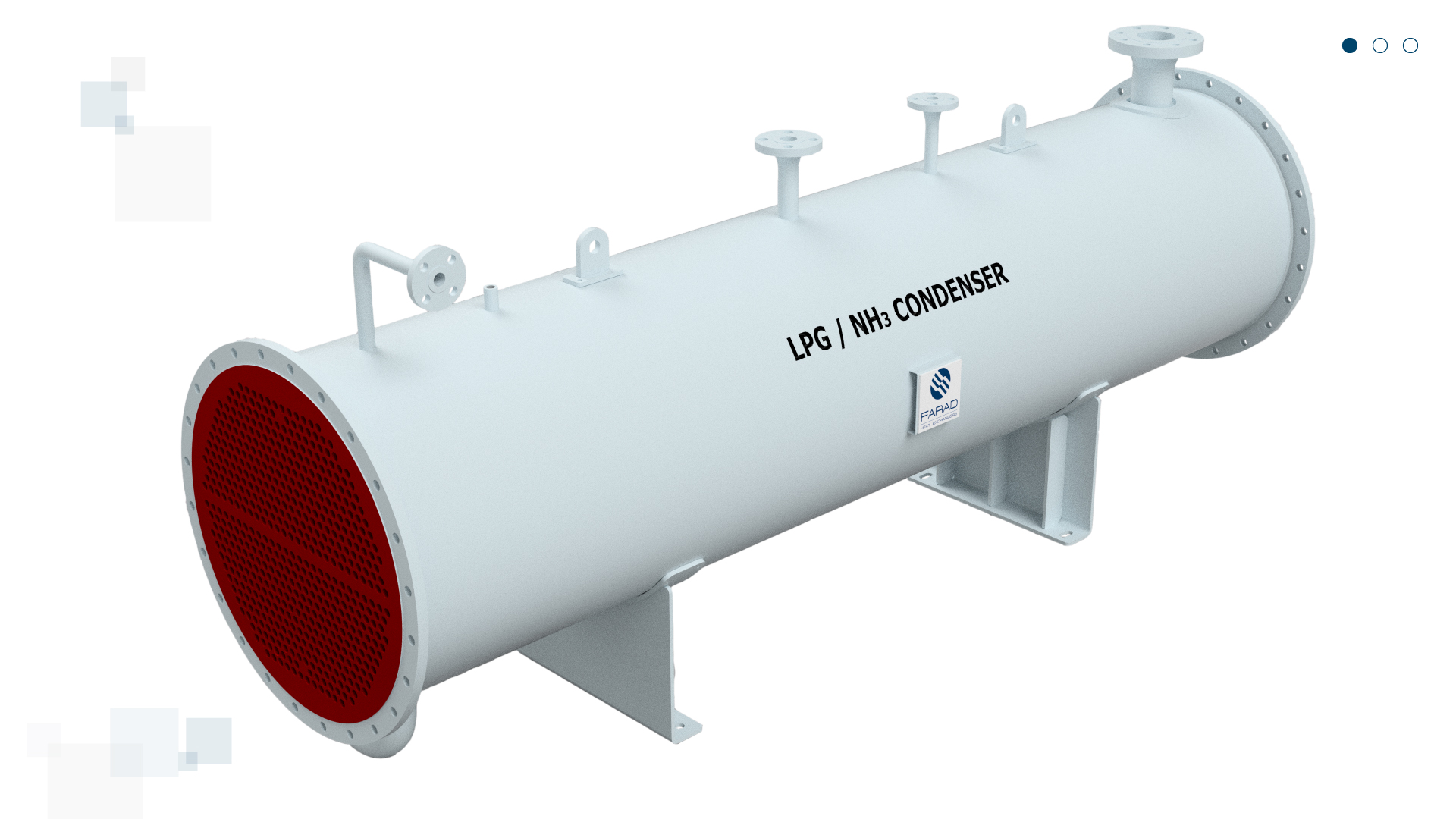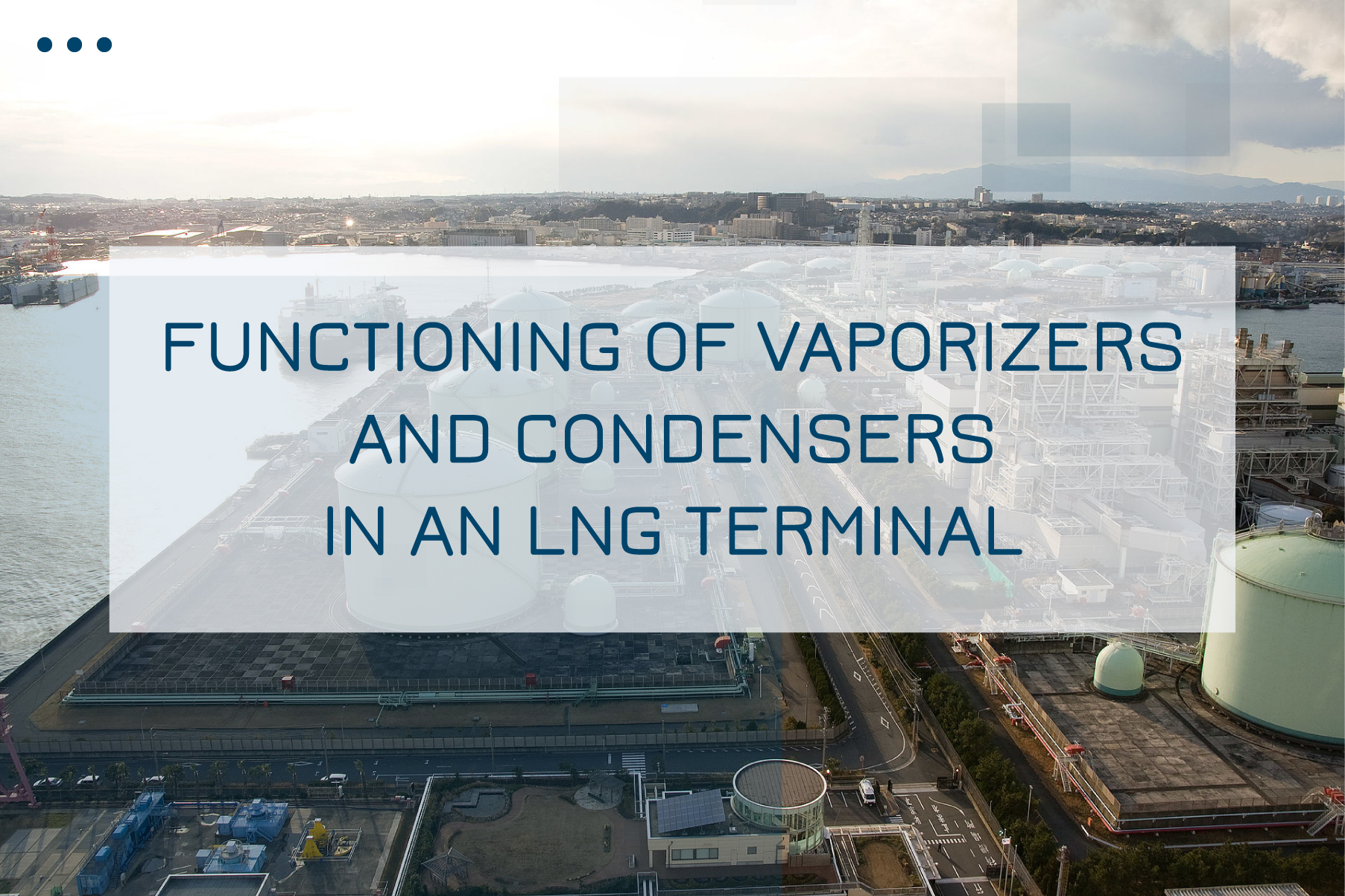An LNG terminal is a facility that handles the import or export of liquefied natural gas (LNG). The terminal includes equipment for loading and unloading LNG from LNG carriers, liquefaction and regasification, storage, pumping, compression, and measurement of LNG. LNG is typically transported by sea as a liquid because it is the most efficient way to transport natural gas over long distances.
LNG terminals can be categorized as either LNG export liquefaction terminals or LNG import regasification terminals. Some LNG terminals combine both functions, such as a floating storage and regasification unit (FSRU).
The primary equipment at an LNG terminal includes:
- berths for gas tankers
- isothermal storage tanks
- submersible low-pressure tank pumps
- gas flow control equipment
- compressors, recondensers
- high-pressure pumps for pumping LNG into vaporizers
- LNG vaporizers
- commercial accounting and odorization units.
All interactions with LNG can be divided into two main stages:
- direct regasification of LNG
- LNG storage
The Regasification Stage: Converting LNG from Liquid to Gas
The regasification stage involves converting LNG from a liquid to a gaseous state, making it suitable for normal use, such as supplying gas pipelines to consumers and injecting it into gas cylinders. Upon arrival at the terminal, LNG is pumped from gas tankers to tanks for storage in liquid form. LNG is then converted to a gaseous state through an evaporation system using direct or indirect heating. Vaporizers play a significant role in this stage of the terminal’s operation.
There are several types of vaporizers used at terminals, including those that operate at ambient temperature, open-type vaporizers that use sea or river water as a coolant, atmospheric vaporizers that use air as a heat carrier, and those that operate at temperatures above ambient using direct heating.

LNG Cargo Storage Stage: Isothermal Tanks
In the LNG cargo storage stage, isothermal tanks are used to store the liquefied gas. These tanks are the most expensive part of the terminal and can cost up to 50% of the total cost. LNG is stored at a boiling point of approximately -162°C, and steam gas is generated continuously above the liquid level due to heat penetration from the environment, causing the internal pressure in the tank to increase. To maintain the pressure within the specified limits, the steam gas must be pumped out of the tank to minimize its impact on the environment.

Condensers are commonly used to control the steam gas by recondensing it in a recondenser and re-liquefying the gas using a refrigerating machine. In storage mode, all vapors are sucked in by compressors that pump gas into the recondenser. LNG is supplied to the recondenser by submersible pumps from the storage tank, and the gas condenses upon contact with supercooled LNG. The steam gas recondenser’s typical design is a direct-flow nozzle column, and two types of recondensers are commonly used: those with an annular gap and those with a nozzle located in the upper part of the device.

Breezemarine Group Experience: Solutions for Evaporation and Condensation Systems
Breezemarine Group provides a complete turnkey solution for your LNG terminal. We offer custom design services based on your technical requirements, handle the production process, and deliver to any location worldwide.
Our team can replace existing units and provide ongoing maintenance services to ensure optimal performance. Trust us to provide top-notch solutions for your cargo condenser and vaporizer needs. Contact us today to learn more.
